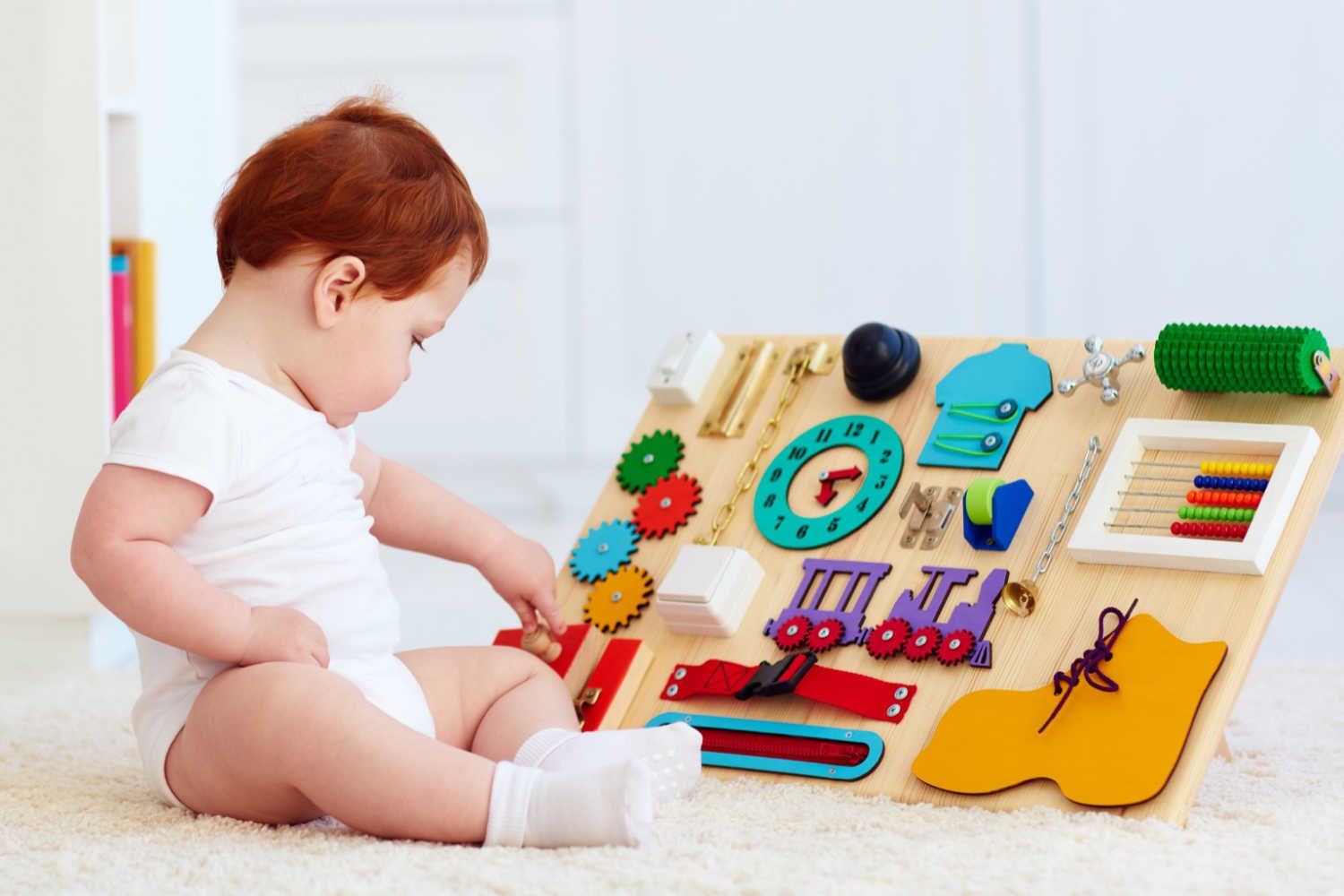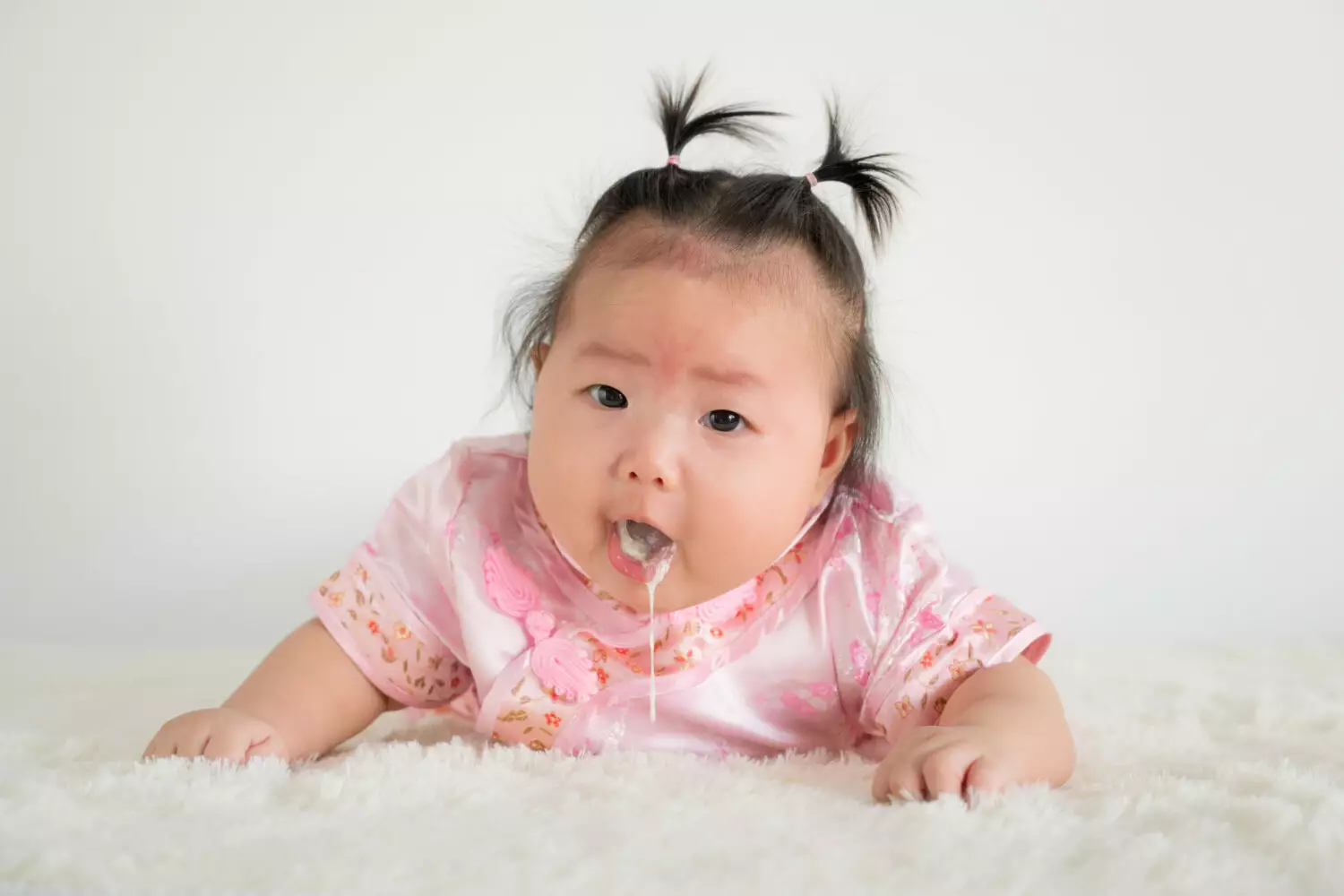
Best Diet After Cesarean Delivery
10 min readWritten by Editorial Team


Just had a baby? Was it a cesarean section? First of all, CONGRATULATIONS! If this was not a planned cesarean section, you might experience some disappointment. However, it is now time to focus on recovery and the baby. An important part of the mother’s recovery is her diet after cesarean delivery. The period after C-section is a painful time and it is exhausting both mentally and physically. After any surgery, a person requires rest, a lot of it!
However, after a C-section, as a new mother, you will have to take care of your little one as well. Therefore, during this time, you need to choose a diet that will help you recover faster and provide optimal nutrition as you start to breastfeed your baby. So what needs to be included in the best possible diet after cesarean delivery? Continue reading to know what all should be included and excluded from your diet plan after cesarean delivery.
In This Article
- Why is Nutrition Important Post Delivery?
- Ideal Diet After Cesarean Delivery
- Indian Diet After C-Section
- What Food to Avoid After C-Section Delivery?
- Tips for a Good Diet After Cesarean Delivery
- FAQ’s
Why is Nutrition Important Post Delivery?
Nutrition quickens the healing process and improves the energy levels of the new mother after a C-section. So a balanced diet plan after cesarean delivery is necessary. For a new mother who is breastfeeding, the calorie intake should not fall below 1800 calories per day as per the American Dietetic Association. Apart from resting, your movement will also be restricted to ensure a safe and full recovery. Therefore, it is crucial that your diet after cesarean delivery is well balanced.
In addition to nutrition, the other essential criteria for picking an ideal diet plan after C-section is digestibility. The foods you include in your diet after C-Section should not be difficult to digest and should stimulate stress-free bowel movement.
Paying special attention to this factor in your diet after C-section will reduce the strain on your abdomen. This is very important for the healing process. Easily digestible foods rich in fiber, proteins, iron, calcium, and vitamins should be included. Check with your doctor; get in touch with a dietician if needed, to come up with a well-rounded diet after C-section delivery. Until then, here is something to help you out.
Ideal Diet After Cesarean Delivery
So, what should be the diet after cesarean delivery? An ideal diet after cesarean delivery should be designed after taking into consideration the health of both mother and baby. Food stimulating breast milk production, easy-to-digest foods, and easily absorbed ingredients should be included in your diet after cesarean delivery.
Here are some foods which can be included in your diet after C Section:
1. Whole Grain Food
Whole-grain foods are rich in fiber and hence easier to digest. A good diet after cesarean delivery can include whole-grain pasta, bread, and brown rice. These are rich in carbohydrates and help in maintaining energy levels and breast milk production.
As a new mother, sleep could be a luxury you are deprived of. Start your day with a whole-grain cereal breakfast to get that instant energy and feel fresher.
2. Protein, Calcium, and Minerals
Proteins help with the growth of new tissues and in the healing process. Calcium helps in muscle relaxation, supports bones and teeth, avert osteoporosis, and helps in blood clotting. It is very important to include these in your diet after cesarean delivery to help you heal faster.
Want some options? Here are a few:
- Low-fat dairy products like skimmed milk, cheese, low-fat yogurt, nuts, dried peas, and certain beans are excellent protein and calcium sources.
- An egg is rich in protein and zinc – a good addition to your food diet after cesarean delivery.
- Pulses are a good source of protein.
- Sesame seeds are rich in iron, calcium, copper, phosphorus, and magnesium.
- Dark-colored beans like kidney beans and black beans contain iron, which is a significant mineral for breastfeeding mothers. However, these are very gassy foods and hence should be limited, if not avoided completely, in the first few weeks.
3. Fiber-Rich Food

Fiber helps in reducing constipation. Constipation can put pressure on the wounds and incisions, delaying the healing process.
- Eating lots of raw vegetables and fruits as a salad is not only very nutritious, but they also help to add roughage to the diet and provides relief from constipation. Consuming three portions of fruits and two portions of veggies every day is a good diet after cesarean delivery.
- Oats and Ragi are good sources of carbohydrates, calcium, proteins, and iron. They are very high in fiber content too. Cookies made from oats and ragi can be a quick go-to snack when you are hungry, but can’t sit down for a meal.
4. Vitamin-Rich Food
Vitamins are rich in antioxidants, which help in repairing tissues. It also helps produce collagen in the body, which builds new scar tissue, ligaments, and skin. Adding this to your diet chart after cesarean delivery can be very beneficial.
Are you looking for inspiration?
- Green vegetables like broccoli, spinach, fenugreek leaves are good sources of vitamins A and C, iron, and dietary calcium.
- Vitamin C also helps in combating infections. Therefore, include lots of fruits and vegetables like oranges, melons, papayas, watermelons, strawberries, grapefruits, sweet potatoes, etc. in your diet plan after C-Section to keep those allergies and cold at bay.
5. Fluids
Breastfeeding can dehydrate a mother faster than a good HIIT workout. If the liquid intake is not adequate, not only will the new mother suffer dehydration, but the breast milk production will also dip.
Drinking plenty of fluids is essential to ease bowel movements, escape dehydration, and produce a sufficient quantity of milk for the little one. Therefore, include tender coconut water, non-citrus fruit juices, herbal tea, plain water, low-fat milk, buttermilk, soups, etc. in your diet after cesarean delivery. Fenugreek tea is perfect for lactating mothers.
6. Dairy
A breastfeeding mother needs to load up on her dairy intake to ensure both she and the baby receive an adequate amount of calcium. While growing inside the womb, the baby takes all the required calcium from the mother’s body. If the new mother’s calcium intake is not taken care of by her diet after cesarean delivery, she can later have bone density issues.
Also, milk is liquid and definitely more filling than water or other juices. A new mother will not have much time to sit and eat well-balanced meals or snacks all day long. Milk can be a quick go-to to get everything she and the baby need.
[Read: 16 Best Foods For Breastfeeding]
Indian Diet After C-Section
Are you an Indian looking for a good diet after cesarean delivery? Even if you are not Indian but want a good diet plan after cesarean delivery, here are some great options that are part of an Indian diet after the C-section:
1. Pulses

Pulses are a great source of protein. If you are a vegetarian, you miss out on animal proteins that can be compensated for by pulses, quite easily. Including pulses like moong and masoor dal in your diet after cesarean delivery can not only increase your protein intake but can increase your vitamins and mineral intakes too.
2. Fenugreek
Indian mothers and doctors love this wonder ingredient that is rich in calcium and essential minerals. They are known to reduce joints and back pain and boost milk production, making it a must for a good diet after cesarean delivery. Fenugreek can be added more than usual in all your sabzis, tea, Indian snacks, etc. You can also soak fenugreek in warm water overnight and eat it first thing in the morning. This is believed to improve your immunity too. Something anyone, especially a new mother after surgery needs!
3. Garlic
Garlic is another ingredient that is known to boost milk production in breastfeeding mothers. It is rich in antioxidants and hence improves your immunity and protects you from the common cold and other such ailments. If you have just had a cesarean delivery, you should ensure you don’t catch a cold. Sneezing and even mild coughing can be very painful and extremely uncomfortable on your sutures.
4. Cumin
More commonly known as jeera in the Indian household, this is a go-to ingredient for digestion. Having cumin-infused water on a regular basis will not only increase the new mother’s fluid intake but will also ease her bowel movements. Including cumin in your diet after cesarean delivery can even improve lactation.
5. Almonds
Almonds are rich in calcium and fiber, making them a good addition to your diet after cesarean delivery. A new mother will need healthy snacks at hand to munch on. Plain almonds, roasted almonds, almond cookies, etc. are great options to keep at your bedside and munch on as you are feeding your newborn.
What’s more? Almonds are packed with minerals that can help your skin and hair too. Remember, your body has stopped producing all those growth hormones, and now it is up to you to take care of all that glossy hair and glowing skin.
6. Other Foods
Some of the other foods you can include in your diet after cesarean delivery are:
- Turmeric can be added to almost all Indian dishes, and this ingredient helps in improving immunity. It also helps in reducing the inflammation of tissues and thereby speeding up your recovery.
- Ajwain and asafoetida help to ease out the pain due to gastric issues. Flatulence can be one of the most uncomfortable and painful experiences for a mother who has just had a cesarean delivery.
- Ginger is another great addition to your diet after cesarean delivery. It is high in antioxidants and has anti-inflammatory properties too. Adding ginger to all savories and even some snacks can ensure it is consumed in good quantity.
[Read: Top 10 Foods Indian Grandmothers Recommend To Boost Breast-Milk]
What Food to Avoid After C-Section Delivery?
Like certain foods are recommended for a diet after C-section delivery, there are foods to avoid. Though you may have cravings and some foods are more easily available than others, it is better to keep that temptation under check.
Wondering what should you not eat after cesarean delivery? Why worry when we are here? Read on to know about the foods you are better off without.
1. Potatoes
Potatoes are a great source of carbohydrates and can be made into very tasty dishes. However, they are high in gas and can cause too much flatulence in the new mother. Passing gas after cesarean delivery can be quite painful.
2. Red Beans
Red beans, also known as rajma, are a great source of proteins and are recommended to add to your diet after cesarean delivery. However, it is advisable to wait a few weeks until your bowel movements are stabilized, and the suture pain has subsided before you load up on this delicious and healthy ingredient.
On this note, chickpeas, cauliflower, and cabbage can be left out of your diet after cesarean delivery, for a few weeks too.
3. Carbonated Drinks
These are just loaded with sugar and other artificial ingredients that do not do good to anyone, leave alone a new mother. These drinks dehydrate the body, and this makes it difficult to digest food. This will not only add stress to your bowel movements but will also affect your milk supply. Let’s not forget what you consume does reach your baby in small quantities and carbonated drinks are not something we would want our baby to have in their initial months.
4. Fried and Spicy Foods
As tempting as it may be, adding fried and spicy foods to your diet after cesarean delivery is not a great idea. A cesarean section involves cutting through many layers to get the baby out safely. Spicy food may hurt the incision from the inside. Fried foods may cause bloating, which, as discussed earlier, is not very comfortable after a C-Section.
5. Fast Foods
A new mother may not find time to cook healthy meals or even basic meals, but resorting to easily available fast foods, is not smart. Most of the fast foods are deep-fried and have loads of flavors and spices added to them. As mentioned above, none of it is good enough to be a part of your diet after cesarean delivery.
6. Alcohol
Alcohol goes straight into your milk and then to your baby. If you are breastfeeding your baby, alcohol is a definite no-no for the first few months. If you ought to drink after the first few months, ensure you pump out the milk and feed the baby only after a minimum of 4 hours gap.
7. Uncooked Meat
Love your sushi? Did your doctor ask you to stay off it during pregnancy? It’s probably for the best if you stayed off a little while longer. Yes, fish in your diet after cesarean delivery is a great source of minerals and energy, but uncooked meat can cause indigestion and other stomach bugs, which a new mother should stay protected from.
Mercury contamination is also a risk from both cooked and uncooked seafood. Any uncooked or underdone meats can be a source of food-borne bacterial infections which can lead to food poisoning. This is not a risk pregnant women would want to take, especially when breastfeeding their babies.
8. Cold Foods
Cold foods like cold drinks, ice creams, etc. are best to be avoided. It is not that they will cause a cold, but they can affect your throat. With immunity on the lower side after the surgery, a new mother needs to be extra cautious. An irritated throat can lead to coughing, which will be very painful after a C-section.
[Read : Magic Ingredients That Boost Breast Milk]
Tips for a Good Diet After Cesarean Delivery

Whether you follow an Indian diet after C-section or have a mixed diet after cesarean delivery, the following tips can help you come up with a balanced diet plan after C Section:
- Ensure you are consuming more calories than your regular intake, if you are actively breastfeeding.
- Eat what suits you and the baby.
- Eat smaller and more frequent meals throughout the day.
- Add more liquids to your diet after cesarean delivery.
- If you feel constipated, reach out to your health care professional and ask for a laxative or some other solution to help your bowel movements.
- Include a lot of fruits, nuts, and fresh vegetables in your diet after cesarean delivery. Grilled vegetables can be a great snack.
- If you are feeling constipated, have a banana for a snack.
- Getting time to eat can be a challenge for a new mother. However, ensure you chew your food well and not just gobble it up.
- Get help! If people around you offer help, take it.
- Prepare a meal chart for the week and do your shopping accordingly. This will help you stay more organized and not waste time thinking of a menu every day..
The time after a delivery – be it normal or cesarean section- is crucial for the new mother and the baby. It is ok if you are not cooking a full-on healthy meal every day. It is ok to cook in bulk and store it in the fridge for later use. You know what is best for you and what suits your lifestyle.
Anytime you feel overwhelmed, remember there are a lot of hormones fluctuating inside you and this period is indeed tough. Take care of your diet after C-section delivery, but remember to take care of yourself too!
FAQ’s
1. Can I Return to Spicy Foods After C-Section Delivery?
No, it is not safe. Spicy foods can trigger your wound and digestive system. It can cause a lot of pain as well as discomfort.
2. Should I Avoid Beans After C-Section Delivery?
Beans are rich in many nutrients. However, some varieties lead to a lot of gas formation. Ensure you don’t eat foods that cause gas, soon after your surgery.
3. What Should I Eat to Relieve Constipation After C-Section?
Eat foods rich in fiber, such as raw vegetables and oats. Avoid foods that are spicy. Avoid foods rich in cholesterol as well.
4. I Don’t Have Time to Cook. Can I Eat Outside Food After C-Section?
You can eat in moderate quantities. It is safer to eat home-cooked foods. These will not have unnecessary spices or oil. It will be fresh food too.
Read Also: Postnatal Diet – Foods You Should Eat and Avoid After Delivery

Editorial Team,
With a rich experience in pregnancy and parenting, our team of experts create insightful, well-curated, and easy-to-read content for our to-be-parents and parents at all stages of parenting.Read more.
Responses (0)
Want curated content sharply tailored for your exact stage of parenting?
Related articles
Sponsored content
Discover great local businesses around you for your kids.
Get regular updates, great recommendations and other right stuff at the right time.











